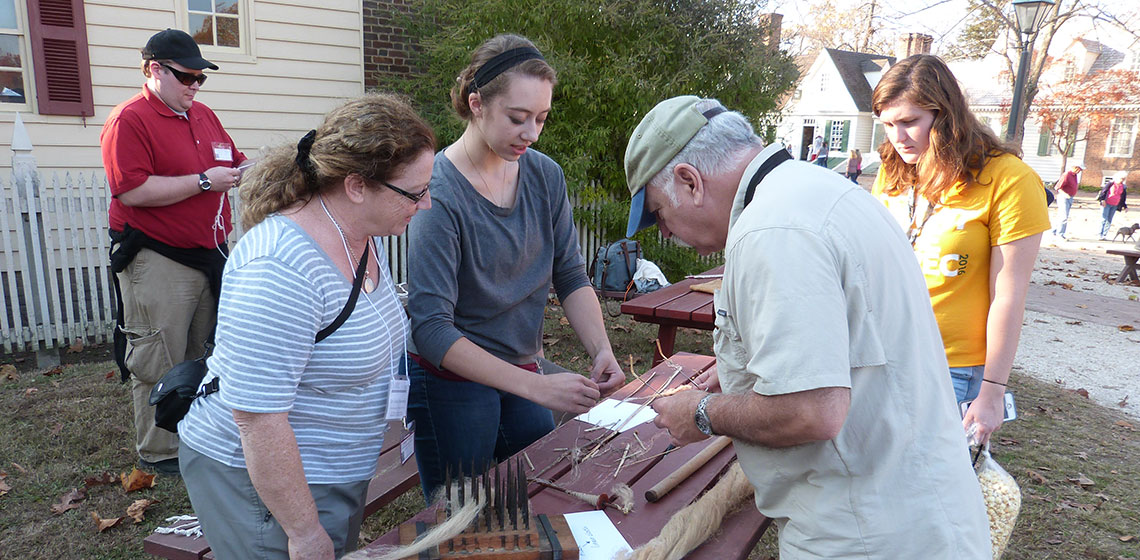
The 2016 REARC conference hosted by EXARC in Colonial Williamsburg, Virginia, from November 18th to the 20th, was an unforgettable experience. After a midnight drive and a short night's rest it was time to listen to papers. Everyone giving a presentation was incredibly knowledgeable and the passion they had for their topics was unprecedented.
Matthew Swieton’s presentation on the use of experimental archeology in a CRM context showed the practical uses the field has outside of research and interpretation. I also enjoyed Neil Peterson’s presentation on reconstructing Hnefatafl, a Viking board game. Through archival research and trial and error, he has been able to determine some of the rules and strategies for playing, and I look forward to playing this game in the future. Ed Schultz’s talk on the effectiveness of living history farms was great at showing the positive ways in which interpretation can be used as a method of learning. The experience, insight, and ability to engage the public made his presentation very enjoyable and made me happy to know that our children are still learning about the importance and difficulty of agriculture. The variety of skills and backgrounds represented shows how effective the EXARC program is at bringing people together to have meaningful and fun conversations.
The breakout sessions on Saturday brought to me a new conference experience that I had never seen before. Having these sessions in Colonial Williamsburg brought a new level of context that I don’t believe had been achieved before. Having experimental archaeologists and prehistoric craftsmen displaying their skills next to their Williamsburg counterparts was excellent. By being in a public setting, visitors to Williamsburg were able to see new skills and the evolution of technology. The iron smelting demonstration by Neil Peterson ad Darrell Markewitz was very insightful. It is one thing to see a blacksmith make a nail, but having a bloomery furnace converting ore into iron next to the blacksmith's shop gave a deeper meaning to the experience. Visitors were able to see how much work was actually needed to make a single ingot, and they could then go inside and see what could be made from that ingot. Another demonstration I enjoyed was “bow making in a day” by Diederik Pomstra. The speed and skill that Diederik uses is astonishing, and it is always fun to see him work. These sorts of demonstrations are not seen often in the United States, and being able to share that with the public was a great contribution from the conference.
What the REARC conference gives you is context. Being able to see technologies from different time periods recreated side by side is not something you get to experience at an ordinary museum. What was most enjoyable was getting to watch the public engage with the REARC demonstrators. Inspiring people to learn about the past and showing them the challenge of the crafts is what experimental archaeologist and reenactors do, and I believe that it was executed flawlessly. I had a wonderful experience at REARC and I hope to attend whenever it is possible.